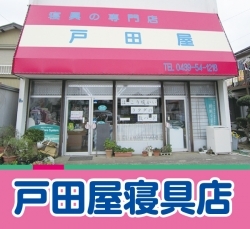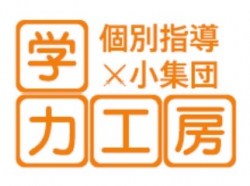Info Type
View Option
Sort by Month
Sort by Category
Back
This text has been translated by auto-translation. There may be a slight difference between the original text and the translation. (Original Language: 日本語)
2024/6/27 - 2024/7/18 / New York City (Diamond District), New York / Other

| Venue | |
|---|---|
| Address | 145 West 57th Street, New York City (Diamond District), New York, 10019 USA |
| Date | 2024/6/27 - 2024/7/18 |
| Time |
- [Time detail]
Mon - Fri : 10:00 am - 6:00 pm, Sat : 10:00 am - 5:00 pm, Sun ・ closed on holidays
- [Getting here]
Subway
5 min walk from 57th Street Station on F Train
N ・ Q ・ 3 min walk from 57th Street Station on R Train
A ・ B ・ C ・ D ・ 7 min walk from Columbus Circle Station on 1 Train 7 minute walk from
B ・ D ・ 10 minute walk from 7th Avenue E train station
- [Venue detail]
Map : https://goo.gl/maps/ChcpgDcR6CjSDemH8
Nippon Club Special Exhibition "Evolving Hinamatsuri of Hitachinokuni and Craftsmanship" Exhibition


- [Contact]
- gallery@nipponclub.org
- [Registrant]The Nippon Club
- [Language]日本語
- Posted : 2024/06/14
- Published : 2024/06/14
- Changed : 2024/06/14
- Total View : 685 persons
- Find local business with Town Guide
-
- We are not a wonder poket, we make your ...

-
Do you have something in your home that you love and wish was more useful … ? At George's Repair Shop, we not only repair items to their original usable condition, but also modify them according to yo...
修理屋ジョージ
-
- If you are wondering "I can't find what ...

-
We support your "desire to work" ! Southern Chiba Regional Youth Support Station ( Saposte ) provides employment support on behalf of the Ministry of Health, Labor and Welfare. Please feel free to con...
(0438) 23-3711ちば南部地域若者サポートステーション
-
- For all your bedding needs, Todaya Beddi...

-
For all your bedding needs, Todaya Bedding Store has a Sleep Environment Advisor ! Just change your bedding and you will sleep differently ! Free sleep consultation is now available !.
+81-439-54-1218戸田屋寝具店
-
- -Many people have achieved 10kg weight l...

-
The ear acupuncture point diet is a proven diet method that has been used for over 25 years. By stimulating ear pressure points, you will feel satisfied with less food ( and naturally reduce your calo...
+81-436-43-4522耳つぼ痩身サロン mimi
-
- ! We are a farm that grows crops in acco...

-
The terraced rice paddies where our farm is located were the bottom of the sea more than 2,000 years ago. We realized that the land was rich in silicon and minerals, and we thought that by utilizing t...
五膳貪
-
- ALOHA CAFÉ Pineapple", a restaurant with...

-
How about morning at our restaurant where you can enjoy Hawaiian cuisine close to the beach ? Malasadas and acai bowls are available. Take-out is also available, so we recommend eating at the beach or...
+1 (808) 739-1630ALOHA CAFE PINEAPPLE
-
- Building in Los Angeles ・ We can help yo...

-
We specialize in contemporary homes. We can also do Japanese style baths and toilets. 100% Japanese only. Bathroom ・ Kitchen ・ Recess Light ・ Gate ・ Cement ・ PAVER ・ Flooring ・ Tile ・ Framing ・ Paint...
+1 (310) 806-2918Group Okuno
-
- 🌿 Vert Frais, a restaurant in LIC 🌿.

-
Designed with a botanical ( green ) theme, restaurant Vert Frais offers ramen noodles, coffee and other cafe menu items, soufflé pancakes, craft cocktails, and more.
+1 (646) 822-9258Vert Frais
-
- Grand opening of the first US branch of ...

-
MUNCHIEKEN Japanese ramen, produced by "Mengyo," a Tokyo Ramen Award winner, is now open in the U.S. ! The restaurant's most popular item, salmon ramen, is made from a broth other than salmon meat an...
(714) 465-9729MENGYO USA, INC.
-
- Japanese school located in New Jersey an...

-
・ Early Childhood ・ Stable basic education through integrated elementary education ・ Small class sizes and a family-like atmosphere for growth and learning ・ A lively education with dedicated teache...
+1 (201) 947-4832ニューヨーク育英学園 Japanese Children's Society
-
- Our veterinarians, licensed in both Japa...

-
We are here to assist you in the health care of your beloved dogs and cats. We will discuss the best possible care for you and your family animals and take the utmost care of them. Our veterinarians...
+1 (949) 502-5531Sora Animal Hospital
-
- At Gakkou Kobo Kisarazu, we believe that...

-
■ Creating the ability to learn ・ Fostering independence ■ At Gakkou Kobo Kisarazu School, we consider "academic ability = the ability to learn" and focus on career guidance ・ not only for entrance e...
+81-438-42-1623学力工房 木更津教室
-
- The latest inventory information has bee...

-
We have been supporting our customers' car life in the U.S.A. for 28 years ! With the theme of "Proof of Trust !", we value the bond with our customers ! ! AB Auto Town's business policy is "communit...
+1 (310) 212-7990AB Auto Town
-
- Online Assistant/Emily., which specializ...

-
Emily. is a US based Japanese ・ English speaking online assistant service. We can assist you with a wide range of tasks from daily operations to specialized fields on your behalf.
+1 (310) 347-8750COEL
-
- Come try our new Kamogawa specialty, Kam...

-
Kamogawa Shokudo is a Chinese restaurant located along the Sotobo Kuroshio Line ! We offer authentic Chinese cuisine with a view of the Kamogawa Sea ! Our specialty is Kamogawa tananmen, which uses th...
+81-4-7096-6678中国料理 鴨川食堂









Generally, Hina Dolls are displayed once a year on the Joushi-no-Sekku holiday to pray for the health and growth of girls, but "Hina Doll" breaks this stereotype. These Hina Dolls can be enjoyed all year round by people of all ages and genders, and by continuing to display them, one can wish for the health and happiness of the family.
In this exhibition, "Hina Dolls" clad in "Yuki pongee", which is registered as a UNESCO Intangible Cultural Heritage, "Nishijin brocade" from Kyoto, and antique lace from France will be displayed and shown how to decorate them according to ceremonies and events. In particular, the "Hina Doll" dressed in a kimono tailored from the same fabric as the Yuki-tsumugi silk kimono worn by the Empress Shang-Ho is one of the highlights of this exhibition.
In addition, large props such as screens, stands, and lights ・ are made by local craftsmen, including "Suzumo Chochin / Mizufu Chochin," "Nishinouchi Washi," "Kasama Washi," "Ohko Lacquer," "Kana Ryokishi," "Paulownia Work," "Kumiko," etc. Original works by these master craftsmen will also be on display.
◇ Contents of Exhibition ◇
1. Katsura Hina doll ( Katsura Hina doll ) :
Displayed in a traditional way, but also as interior decoration that can be enjoyed by all ages, nationalities and places ・. Hina doll as art is presented.
In addition, we will exhibit "Kasane Frame" by Mr. Kosahata, which was born from the fusion of traditional culture and art. The exhibition will also feature "Kasane Frame," a wall-hanging artwork by Kosahata, which is the result of a fusion of traditional culture and art, and features textiles in traditional Japanese colors ・, such as the "kasane-iro-meshi" used in the juni-hitoe (twelve-layered kimono), the favorite of Heian-period nobles, and traditional European fabrics, which are incorporated not only into the Hina Doll costumes, but also into "Kasane Frame. Kasane Frame" is a framed piece made of traditional fabrics from Japan and abroad, with an attack of color in the center. This work is much appreciated as an interior artwork that fits in any place, and is a symbol of the beauty of Japanese culture.
2. Artisans' Art Corner :
- Honjo Yuki Pongee ( Keiko Hanada ) , Nishiuchi Washi paper ( Daisuke Kikuchi ) , Suzumo Chochin / Mizufu Chochin (MIC ・) Itaya/Suzuki Ryutaro), Kana ryogami ( Hisashi Komuro ), Ohko urushi ( Tohru Tsuji ), Kasama-yaki ( Hiroyuki Onuki ), Kiri work ( Toshihiro Akiyama ), Ibaraki Kumiko ( Katsutoshi Adachi ), etc. works will be exhibited.
◇ Profile of the Master ◇
1. Takao Kosahata ( KATSURAHINA 3rd generation ) :
Born in 1972 in Ibaraki, Japan, in 1995, he became the founder of Katsura Hina ・ and the grandfather of Katsura Hina Kiho I
2. Ryutaro Suzuki ( 7th generation of Mohei Suzuki Shoten ) :
Inherited the Suifu lanterns established in 1865 and collaborated with artist ・ Mick ・ Itaya to create "Suzumo Chochin". Suzumo Chochin" was born.
3. Keiko Hanada ( Yuki pongee ) :
After graduating from Otsuma Women's Junior College in 1970, she moved to Yuki City, Ibaraki Prefecture. Together with her husband, she established "Yuki Hanada" and produces works that blend into modern life using Yuki-tsumugi silk.
4. Mick ・ Itaya ( Visual Artist ) :
Graduated from Tama Art University in 1976. Won the Good Design Award in 2012 for his design of the Japanese lighting fixture "Suzumo Chochin".
5. Hisashi Komuro ( Kana ryogami studio ) :
Inheriting the tradition of decorated kana ryogami from the Heian period and creating modern "kana ryogami.
6. Toshihiro Akiyama ( Third generation of Yamakiya of paulownia chests ) :
Established in 1945. Today, together with his father, he is involved in all aspects of chests of drawers, from design to manufacture.
7. Katsutoshi Adachi ( The third generation of Adachi Kengu Corporation ) :
Born in Ibaraki Prefecture in 1964. Selected as a "Contemporary Master Craftsman" for his Kumiko technique and awarded the Medal with Yellow Ribbon in 2022. He is also making efforts to nurture younger generations.
8. Daisuke Kikuchi ( Nishinouchi Washi ・ The fourth generation of the paper village ) :
He has been in the family business since 1972, producing strong and elegant Japanese paper using traditional techniques. We also produce items that meet modern needs.
9. Hiroyuki Onuki ( Kasama Pottery ) :
After graduating from the design department of Tokyo Zokei University, he established his own pottery in Kasama. He produces colorful floral motifs and whiteware, and has held solo exhibitions in Japan and abroad.
10. Tohru Tsuji ( Ogo Lacquer ) :
In 2010, he established Ogo Lacquer Yagou Nuri "Kiki Jian". Planting lacquer trees and producing lacquer consistently, they have produced Ise Shrine treasures and received many awards.
◇Katsura Hina III : Words from Takao Osahata◇
"I began making Hina dolls because I was fascinated by the unique colors and patterns of Japan, which have long been considered a symbol of the Japanese spirit. One of the most straightforward expressions of this fascination is the hina doll. Her life's work is to create hina dolls that can be enjoyed all year round as interior art, and "Kanane in the Frame," a series of "kanade in the frame," which expresses the layered hues of the Japanese traditional clothing, such as juni-hitoe.
We look forward to seeing you there.
Organizer : The Japan Club
Sponsors : J.C.C. Fund, Sekiaki Shoji, Secom, Seibu Shinkin Bank, General Incorporated Association MFU
Cooperation : Ibaraki Prefecture Sales Strategy Department, Craft Art Gallery ( Sekiaki Shoji ), Senken Shimbun
Curator : Mie Tsunobu
Photo 1 : "Green Mountain"
Wearing the costume of genuine Yuki silk, a world cultural heritage, on the first Hina dolls. The inside costume of the female doll and the folding screen behind her were inspired by the original scenery around the studio with rabbits running around in the field. This work was presented to the Emperor Ima-no-Mikoto.
Photo 2 : "Sea bream doll : Red Scarlet ( Kurunai Hiiro )"
This doll is dressed in a yuzen-dyed Tango crepe outfit on top, with scales of sea bream in a bold composition of red scarlet, which represents the breath of life. This pattern was used in the Edo period (1603-1867), when men dressed up in fancy clothes with fancy backs of their kimonos due to the prohibition of extravagance, known as "Urakatsuri no aesthetics".
Photo 3 : "FISBA Dragonfly : Medium"
Hina doll dressed in silk by FISBA of Switzerland. The dragonfly pattern is woven over a cobblestone pattern and then covered with silk organdie to create a unique coloring. A Christmas scene was created.